If you’re a publisher looking for effective ways to make money from your content while keeping your audience engaged, you’re in the right place.
Native advertising is a fantastic solution because it blends ads with your regular content, making them feel natural.
To help you navigate this world of native advertising, I’ve done the hard work of exploring and compiling a comprehensive list of the best native ad networks.
These networks are all about helping you make money while delivering ads that fit perfectly with your content.
They offer many features that suit your needs and goals as a publisher. So, let’s dive in and discover the top native ad networks that can help you succeed! 📚📈📊
Content Outline
10 Best Native Ad Networks For Publishers 2025
I’ve made a list of the finest ad native networks to assist publishers in selecting the best one for them:
1. MGID
If you’re a marketer looking to try out self-service advertising platforms, MGID could be a great start.
MGID offers a strong self-service option with various types of ad formats. This allows you to increase the number of times your ads are shown according to your business needs and marketing goals.
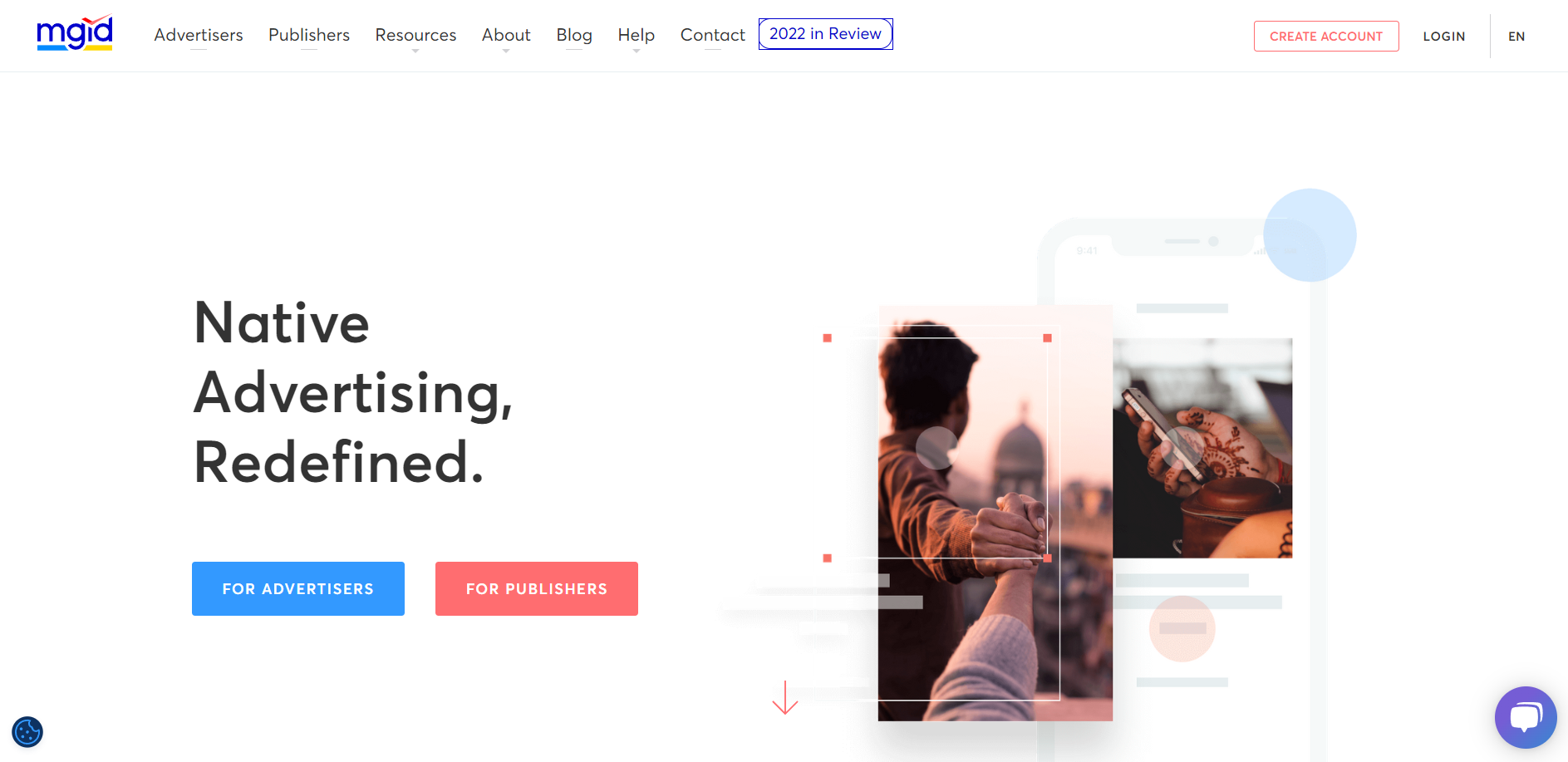
However, it’s important to know that you need to have at least 90,000 visitors per month to use MGID. If your website gets fewer visitors, you’ll need to consider other options.
MGID has different pricing choices like CPM (Cost Per Mille), RevShare (Revenue Share), and CPC (Cost Per Click), so you can pick what fits your budget.
One thing to remember is that you need to earn at least $100 before you can get paid, which helps you manage your finances effectively.
MGID Pros and Cons
MGID Pros
- Versatile ad formats for varied campaigns.
- Empowers self-service ad control.
- Expand reach via real-time analytics.
- Customize strategies to brand goals.
- Filters serious marketers with traffic limit.
- Flexible pricing: CPM, RevShare, CPC.
- Streamlined $100 payment threshold.
MGID Cons
- Excludes <90,000 monthly visitors.
- Limited payment models: CPM, RevShare, CPC.
2. RevContent
RevContent is a big name in the world of native ad networks, and it’s known for delivering a whopping 250 billion unique content recommendations every month, which is really impressive in the industry.
What makes RevContent stand out even more is its partnerships with well-known advertisers and publishers like Forbes and Wayfair.
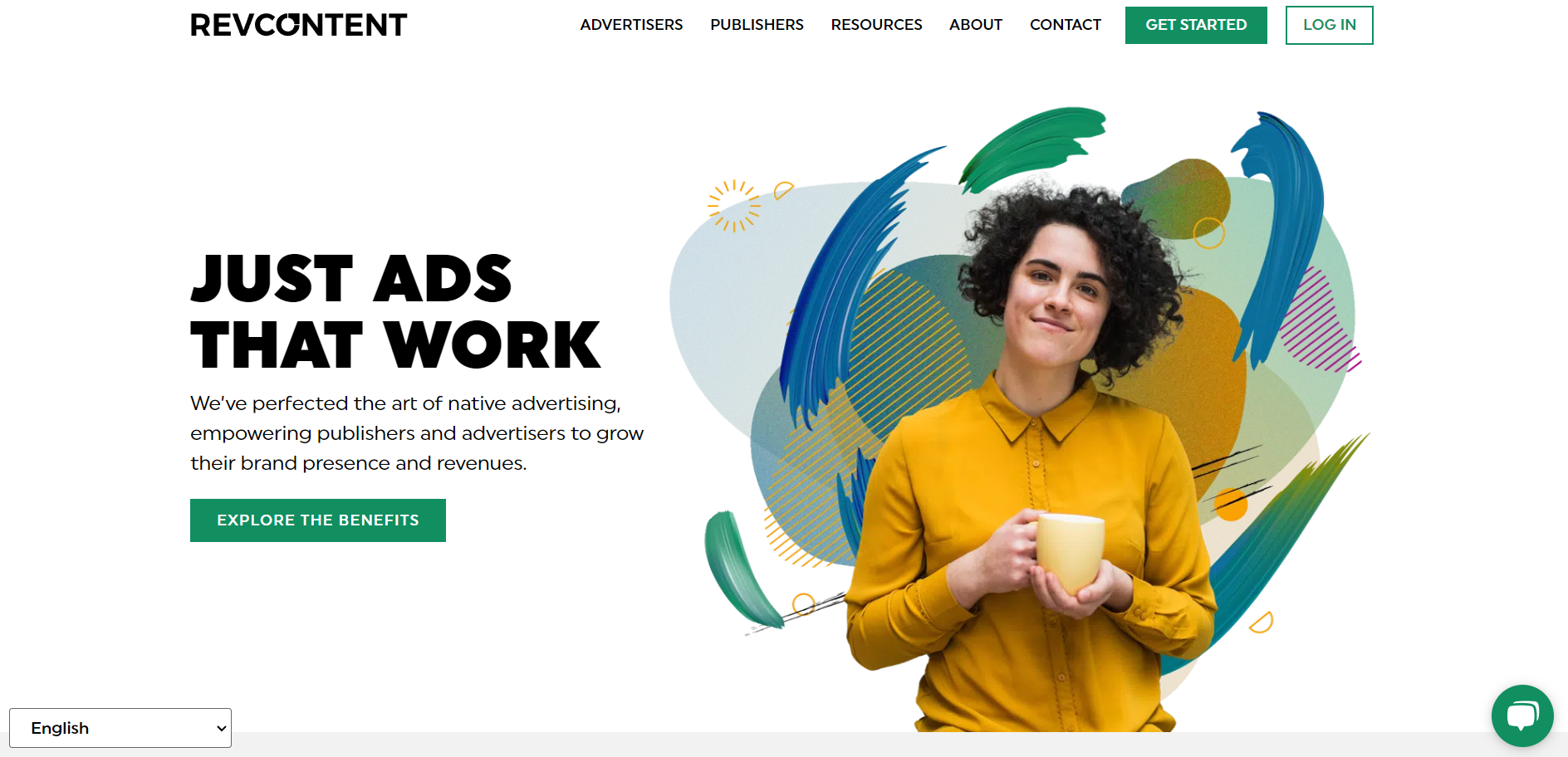
This gives it a lot of credibility. To join this native ad network, your traffic source needs to have at least 3 million page views, ensuring a strong base for meaningful interactions.
This approach sets the stage for effective campaign delivery. RevContent offers two payment models: CPC (Cost Per Click) and vCPM (Cost Per Mille Viewable), catering to marketers with different budget preferences.
Their flexible options make them easy to work with. Plus, they have a low payment threshold of $50, making financial transactions smooth and efficient for users.
RevContent Pros and Cons
RevContent Pros
- 250 billion monthly content recommendations for unmatched exposure.
- Partnerships with Forbes and Wayfair, enhancing credibility.
- Self-service empowers tailored native advertising.
- Requires 3 million+ page views, ensuring quality reach.
- Offers CPC and vCPM options for budget versatility.
- A low $50 payment threshold streamlines transactions.
- Precise native ad alignment with business goals.
RevContent Cons
- Demands high traffic (3M+ page views).
- Limited payment options: CPC, vCPM.
3. TripleLift
TripleLift is a modern method for displaying ads online, particularly ads that seamlessly blend with the content. It’s useful for both content creators (publishers) and businesses (advertisers) who want to reach audiences.
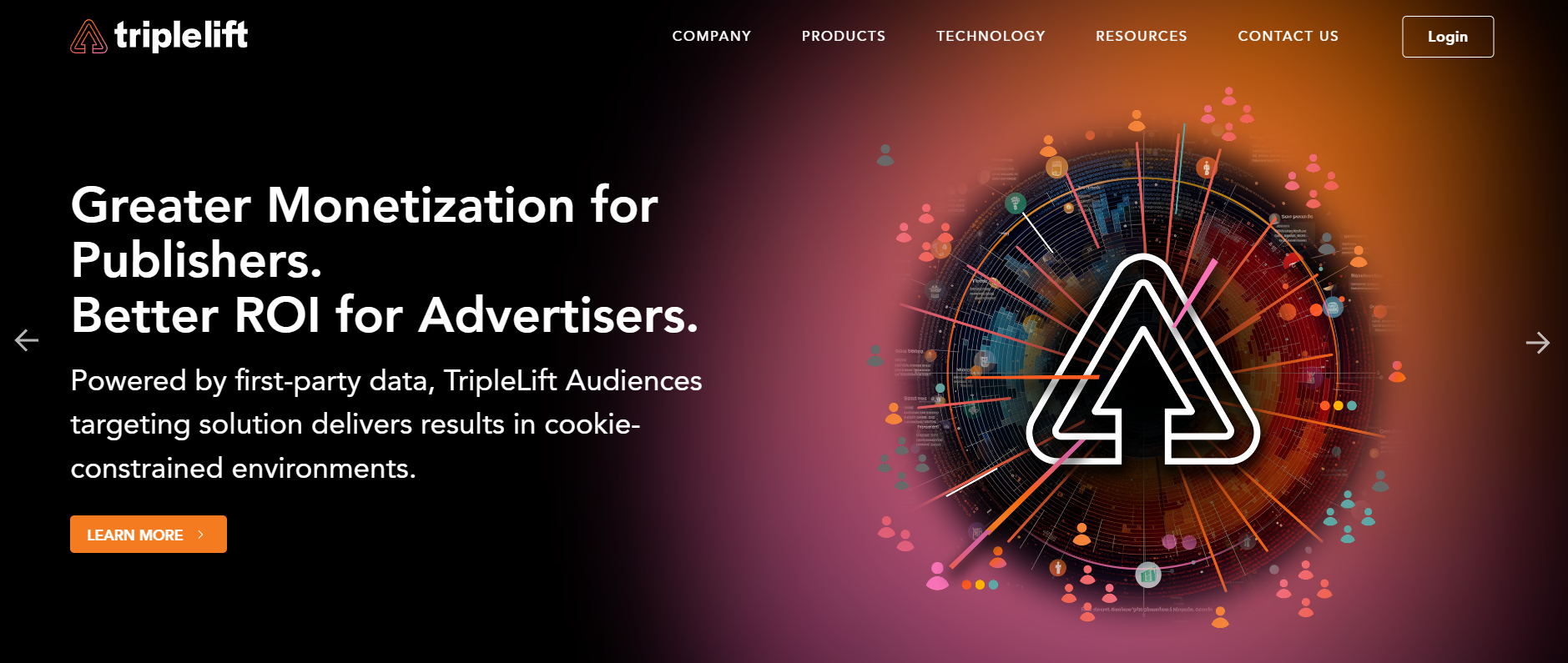
TripleLift acts as a bridge between publishers and advertisers, enabling ads to appear in various online spaces. They provide assistance to publishers in improving their ads and offer responsive customer support.
TripleLift offers diverse ad formats, such as those integrated within articles, in feed streams, carousels, and even videos. This ensures that ads fit naturally with the context and the audience. It’s like having a reliable companion to help create ads that people find appealing and relatable. 📚📊📹
TripleLift Pros and Cons
TripleLift Pros
- Monetize inventory via demand partners for optimal returns.
- Dedicated account manager and robust customer support enhance campaigns.
- Versatile ad formats: in-article, in-feed, carousel, video.
- Balanced CPM and CPC models (max CPM: $3.00).
- There is no minimum traffic requirement for accessibility.
- There is a low $50 payment threshold for seamless transactions.
- Empowers publishers of all scales in programmatic advertising.
TripleLift Cons
- Limited to CPM and CPC pricing models.
- High CPM rates might impact budget-conscious advertisers.
4. Nativo
You might not have heard of Nativo, but it’s a great choice for media websites that show ads.
Nativo is a strong option with a successful history of delivering native ads for well-known names like Dow Jones, The Wall Street Journal, and Time Inc.
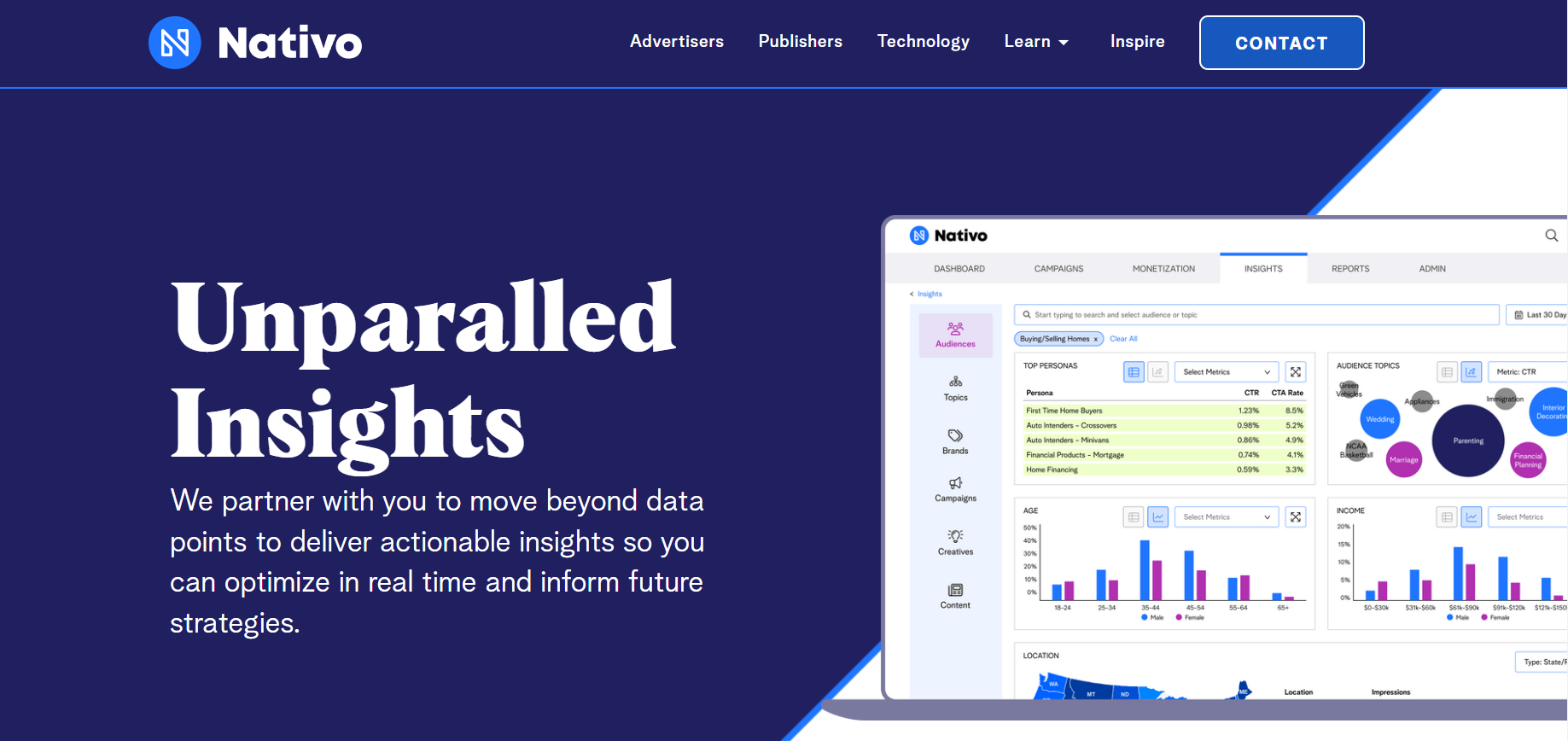
What sets Nativo apart is its wide range of targeting choices and ad styles. This variety means publishers can match their campaigns with specific audience groups and content strategies.
Nativo is inclusive because it doesn’t ask for a minimum amount of web traffic. This means even smaller websites can use it without any limits.
Nativo Pros and Cons
Nativo Pros
- For media ad publishers, there are no traffic restrictions.
- Notable clients: Dow Jones, Wall Street Journal, Time Inc.
- Vast ad formats and targeting options for customization.
- AdStore allows simultaneous monetization partner activation.
- No minimum traffic; low $50 payment threshold.
- Choice of eCPM and vCPM pricing models.
- Flexibility suits publishers of all scales.
Nativo Cons
- Limited to eCPM and vCPM pricing choices.
- Lesser recognition compared to some competitors.
5. Yahoo Gemini
Yahoo Gemini is one of the top ad platforms in the United States, and it’s important for running native ad campaigns for big brands like Yahoo, AOL, TechCrunch, and Huff Post.
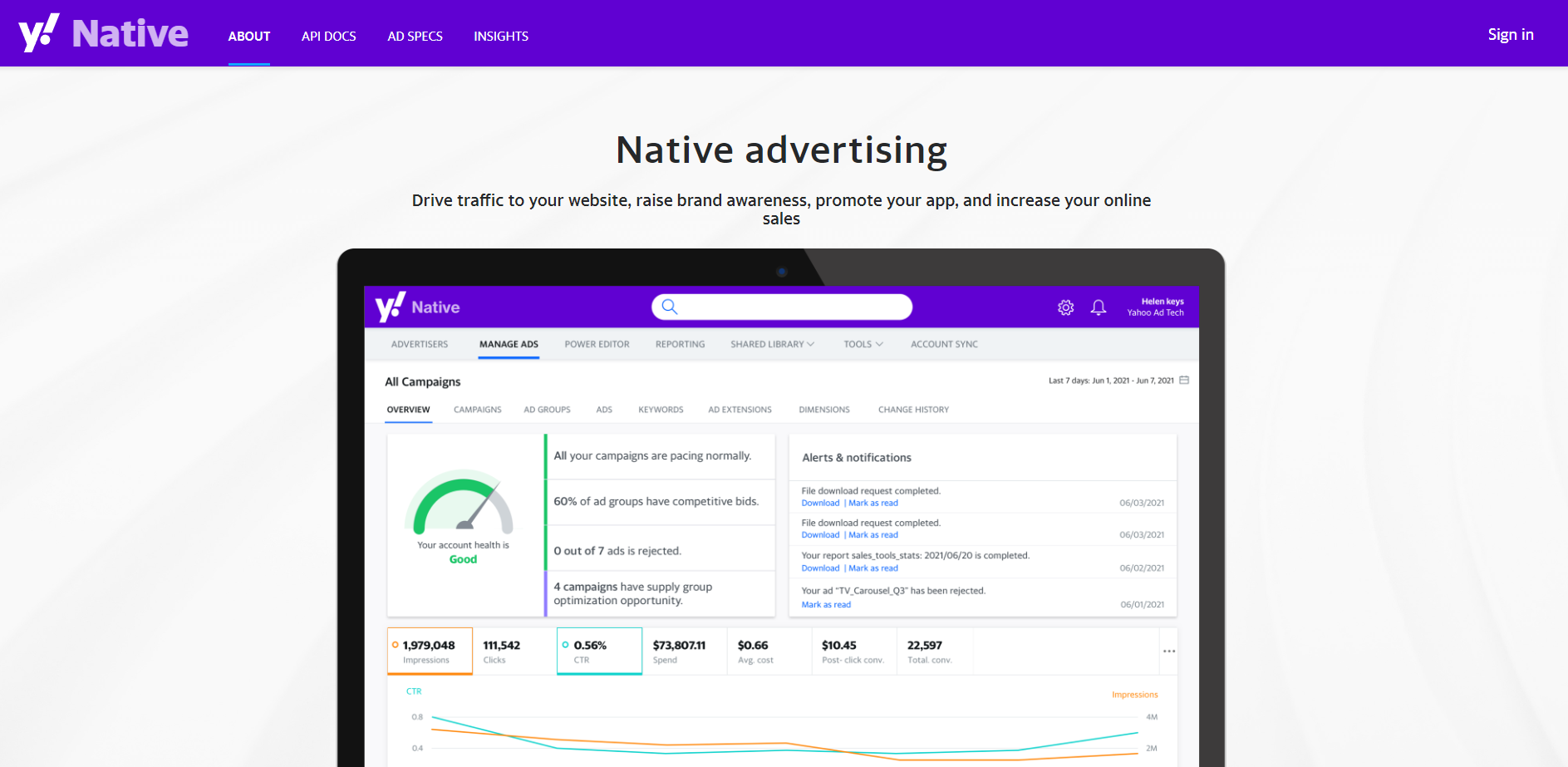
One cool thing about Yahoo Gemini is how smoothly it works with other platforms. Advertisers can bring their ad campaigns from Google Ads directly into Yahoo Gemini, making things easier and more efficient at campaign management.
What’s really neat is that Yahoo Gemini is open to everyone. You only need around 10,000 monthly page views to get started, so it’s great for advertisers of all sizes.
Yahoo Gemini Pros and Cons
Yahoo Gemini Pros
- Top US platform; serves Yahoo, AOL, TechCrunch, and Huff Post.
- Diverse native formats: images, app installs, videos, carousels, and more.
- Import campaigns from Google Ads for a seamless transition.
- Low entry: Only 10,000 monthly page views are required.
- High-profile clientele boosts credibility.
- Wide range of native ad options.
- Efficient campaign management and tracking.
Yahoo Gemini Cons
- Limited to native ad formats.
- Focus on the US market might limit international reach.
6. Paved
Paved’s Ad Network is a tool that helps brands place their ads in emails so they can reach the right audience. Big companies like HubSpot, Bright Cellars, and Dropbox use Paved for this purpose.
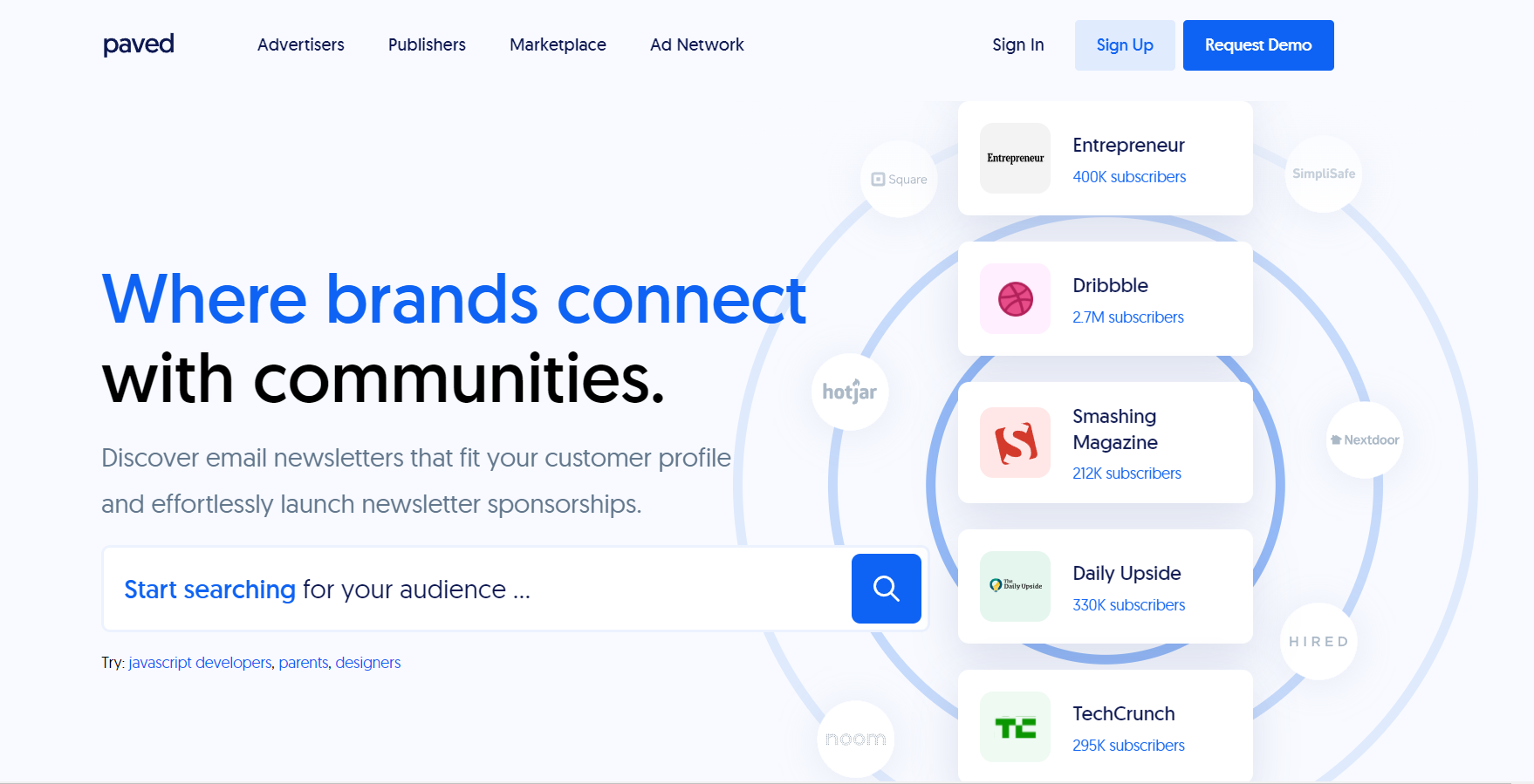
Paved simplifies the process. Advertisers can easily choose who they want to show their ads to, whether it’s specific individuals or companies. This ensures that ads are seen by the right people who might be interested.
What’s really interesting is that Paved also handles the payment for ads in emails. They display ads in important email newsletters like Newser, MSNBC Daily, and Flipboard. It’s a smart and precise way to make sure ads are effective! 📧🚀📊
Paved Pros and Cons
Paved Pros
- Programmatic ads in newsletters for precise targeting.
- High-impact native ads within email inboxes for engagement.
- Custom audience building: demographics, job titles, etc.
- Transparent CPC sponsorships; no hidden fees or subscriptions.
- Access to top email newsletters: Newser, MSNBC Daily, Flipboard.
- A/B testing, effortless scalability for refined campaigns.
Paved Cons
- Limited to email-based native ads.
- Potential dependency on email engagement for campaign success.
7. Taboola
Taboola is a reliable method to attract a large audience to your website, which is great for those seeking online visibility. However, Taboola has certain criteria for eligibility.
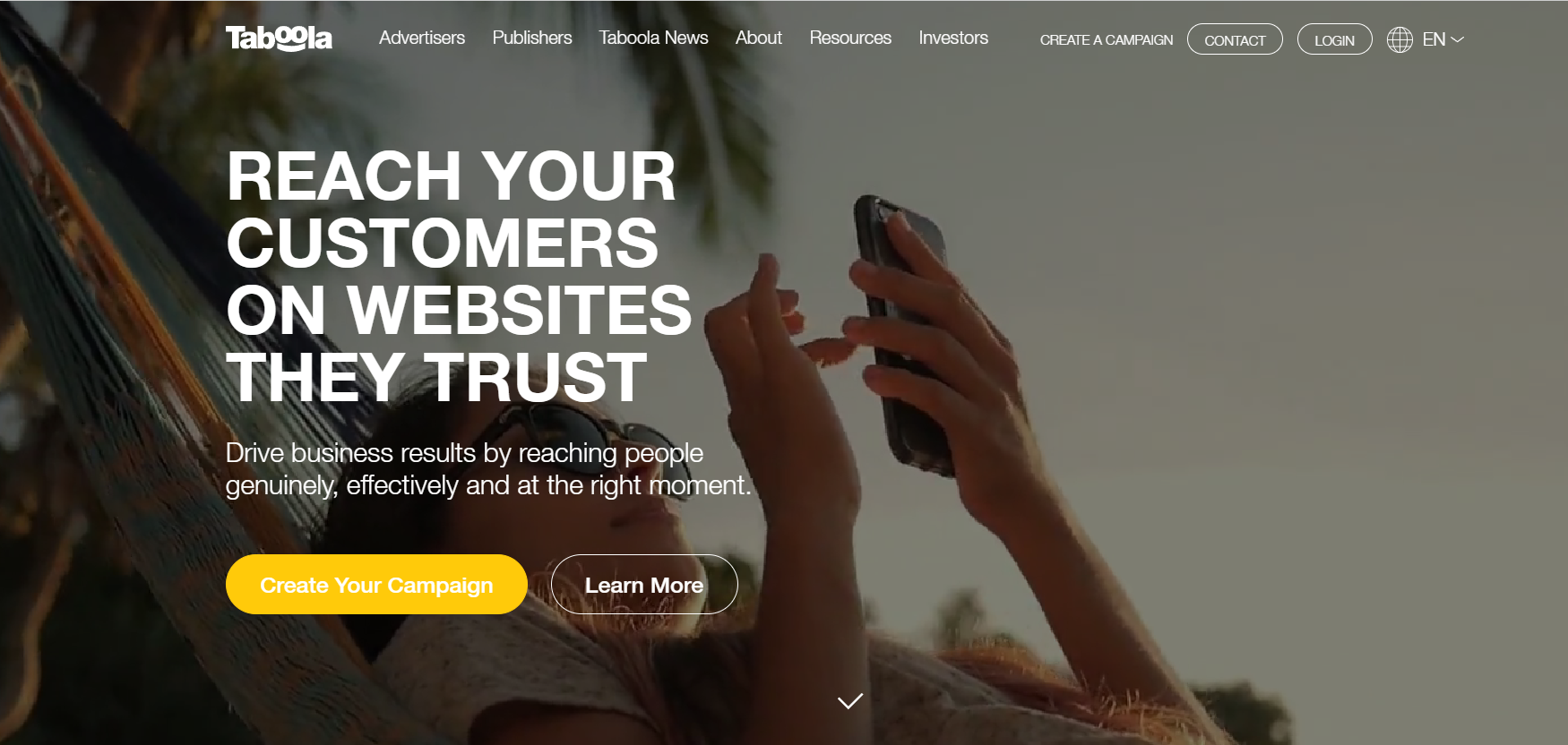
Your website must have over 1 million page views, indicating that Taboola is best suited for websites with substantial existing traffic.
Taboola’s pricing model is a bit distinct. They only charge you when someone clicks on your ad, known as Cost Per Click (CPC). This ensures you pay for ads that actually generate engagement.
They usually charge approximately $2 for every 1,000 views, which is a reasonable cost. 🌐👀💰
Taboola Pros and Cons
Taboola Pros
- Reliable native ad platform for substantial traffic and views.
- Trusted by top publishers like Huffington Post USA Today.
- Requires >1 million page views; filters serious advertisers.
- Performance-driven CPC pricing with max CPM/RPM at $2.00.
- A low $100 payment threshold streamlines transactions.
- Geo-targeting for precise native ad placements.
- Enhances online presence; rivals Outbrain.
Tabools Cons
- Exclusively offers CPC pricing model.
- Limited eligibility with >1 million page views requirement.
8. Outbrain
Outbrain is a top-notch native advertising platform used by prestigious publishers like BBC and The Guardian.
It acts as a connector, allowing publishers to easily access major Demand Side Platforms (DSPs) through programmatic native ad demand.
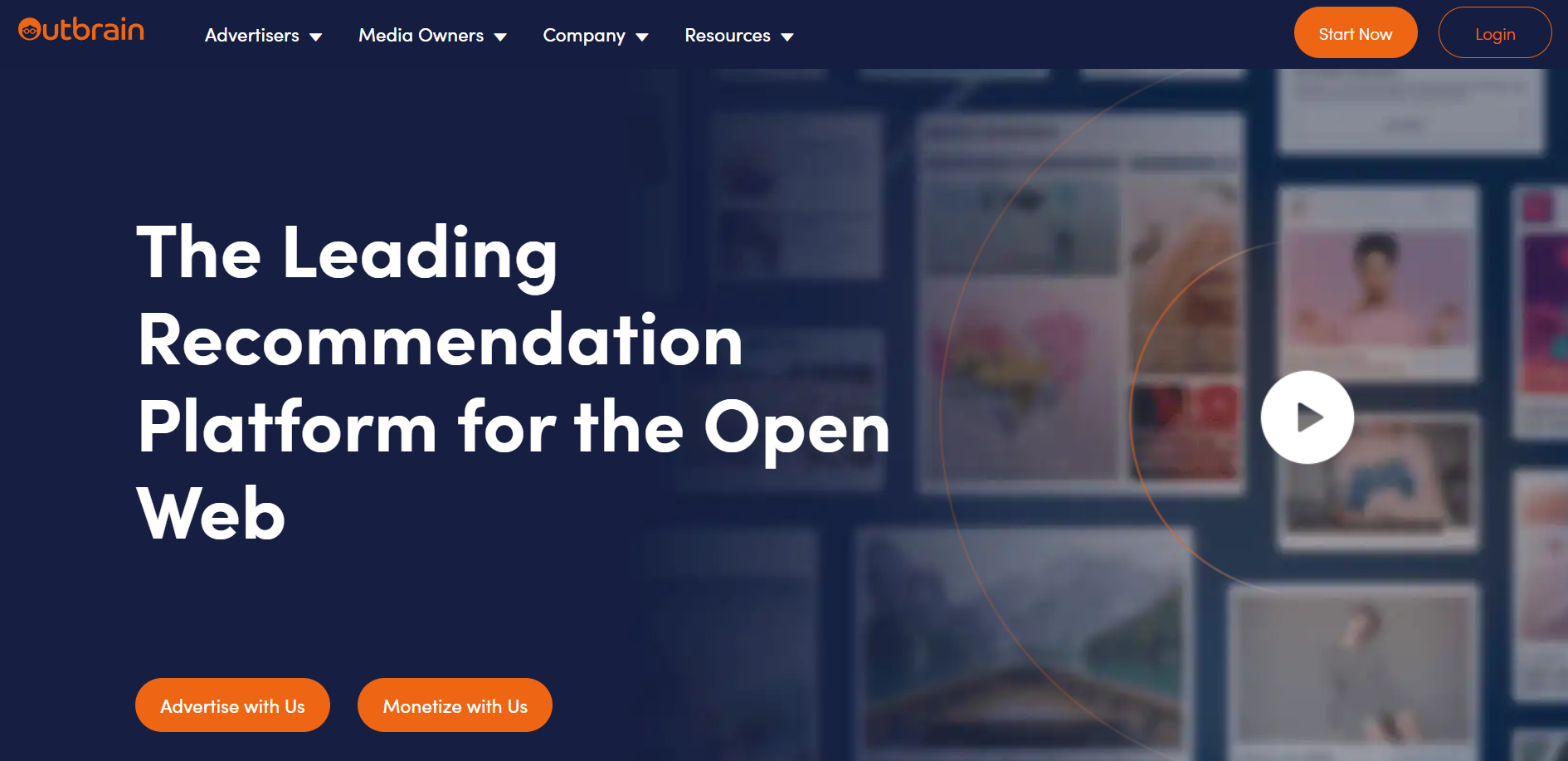
To qualify for Outbrain, publishers need to have a substantial monthly traffic of 10 million page views. This ensures that the platform is mainly geared towards publishers with significant online presence.
Outbrain offers advertisers a range of pricing options. They can choose between the popular CPC (Cost Per Click) and CPM (Cost Per Mille) models.
Notably, Outbrain makes it easy to get started with a minimum payment requirement of zero, removing any financial barriers.
Outbrain Pros and Cons
Outbrain Pros
- Premier native platforms, BBC, and The Guardian trust Outbrain.
- Access top DSPs via programmatic native ad demand.
- Requires >10 million page views for substantial publishers.
- Choose CPC or CPM pricing; zero minimum payment.
- In-feed, in-article options for display and video ads.
- Diverse ad formats; flexible for varied campaigns.
- Elevates online engagement rivals in the native ad sphere.
Outbrain Cons
- High eligibility; >10 million page views required.
- Limited payment models: CPC, CPM.
9. AdNow
AdNow is a major player in native advertising. They have a special approach to help website owners earn money. With over 150,000 website owners using AdNow, it’s a large and expanding community.
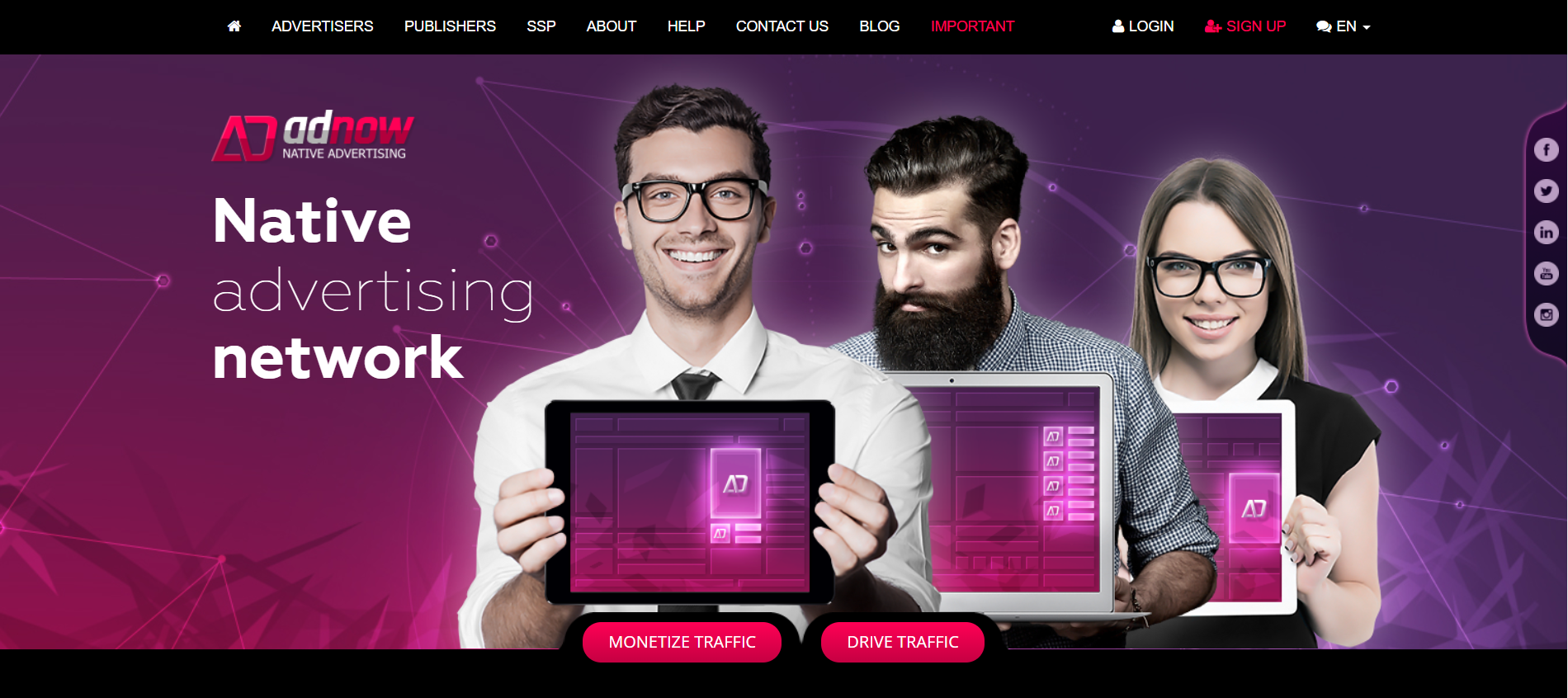
AdNow stands out by blending ads with website content in a distinctive way. This captures people’s attention and increases their likelihood of engagement.
One impressive aspect of AdNow is how they bring together different ads in a single campaign. This allows businesses and brands to present ads effectively. It’s like using various tools to ensure ads reach a wide audience and capture their interest. 🌐💼📊
AdNow Pros and Cons
AdNow Pros
- Widget-based native ads for effective website monetization.
- Thriving network with 150,000+ publishers; expansive ecosystem.
- High RPM rates; ideal for native ad monetization.
- Innovative hybrid ad format enhances user engagement.
- Integrates ads with engaging site content for better interaction.
- Combines native ads and media banners for versatile campaigns.
- The profit potential for high-traffic websites; user-focused content.
AdNow Cons
- Focus on a widget-based approach may not suit all publishers.
- Success is reliant on good traffic and limited impact for low-traffic sites.
10. Adsterra
Adsterra is a major player in the world of sophisticated advertising, displaying over 10 billion unique ads to people every month. They’re committed to helping various website owners earn money by offering these ads.
What’s even more impressive is that Adsterra offers a wide variety of ad types that work on both phones and computers.
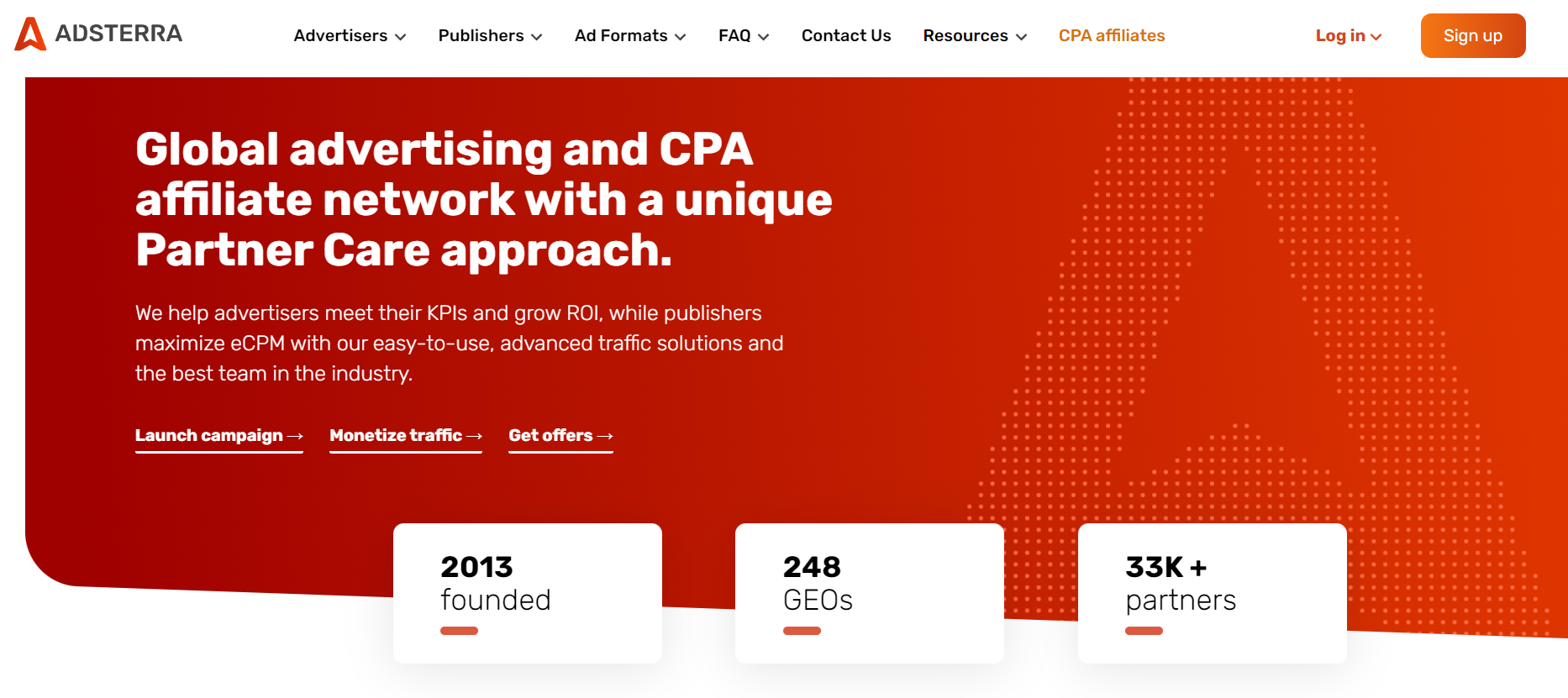
They have ads that show up between content, banners, pop-up notifications, different shapes of ads, and direct links. This ensures there’s something suitable for everyone’s needs.
Adsterra goes the extra mile to support website owners. They ensure timely payments, which is crucial for a successful partnership. They distribute money every two weeks through reputable payment systems, making sure everything runs smoothly and is trustworthy. 💼💰🌐
Adsterra Pros and Cons
Adsterra Pros
- Serves 10B+ geo-targeted impressions monthly; premium advertising presence.
- Holistic support across diverse verticals; 100% ad inventory monetization.
- Varied ad formats for mobile and web: interstitials, banners, and more.
- Reliable bi-weekly payments via major systems; personal account manager.
- Real-time statistics enhance campaign performance tracking.
- A 5% referral program fosters community and collaboration.
- Seamless partnership for publishers; comprehensive ad support.
Adsterra Cons
- Limited to ad-focused services; might not suit all publishers.
- Success is linked to high impression counts and lesser impact for low-traffic sites.
Quick Links:
- 10 Best Video Ad Networks For Publishers
- 10 Best Pop-Under Ad Networks
- 10 Best Adult Ad Networks
- 12+ Best Content Locker Ad Networks For Publishers/Marketers
Conclusion: Best Native Ad Networks For Publishers 2025
In a world where it’s essential to have ads that people like and connect with, the native ad networks we discussed in this article help website owners find the right balance between making money and keeping readers happy.
When website owners use these platforms, they can earn money while also maintaining the trust of their readers.
As things keep changing on the internet, these networks will be a big part of sharing online content. They help ensure ads feel real and fit in with people’s wants. It’s like making sure ads are both accurate and exciting simultaneously. 🌐💼📚
